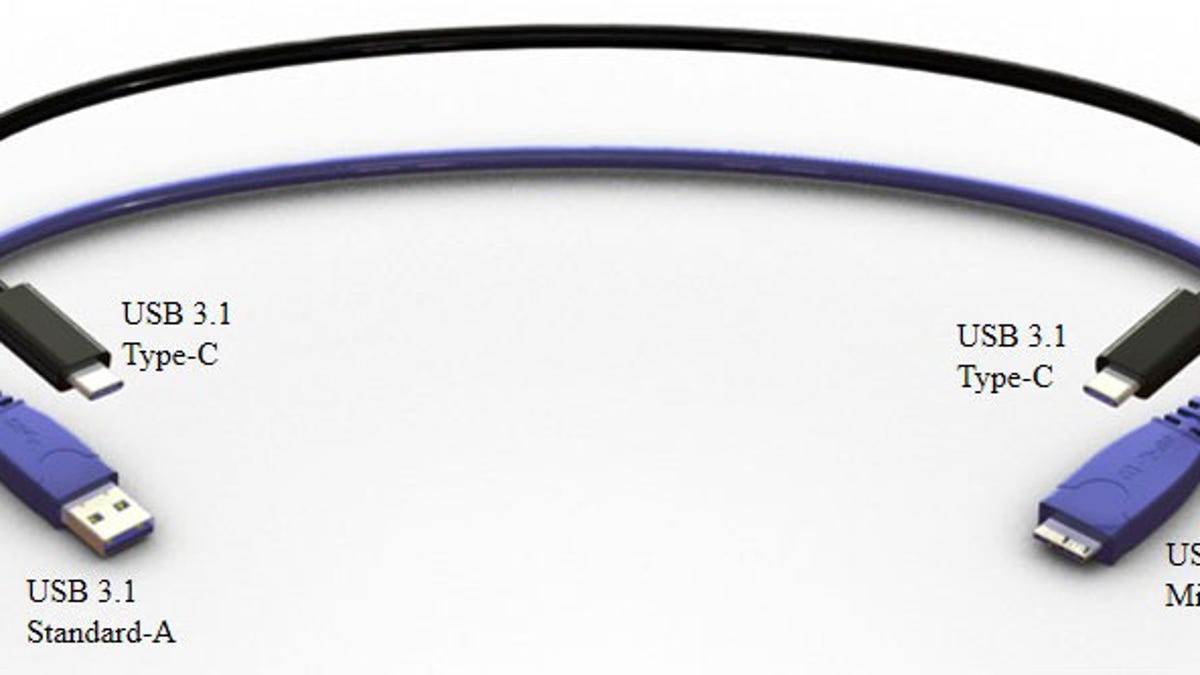Meet the next-gen USB cable that could sweep away all others
The upcoming USB cable design is reversible, has no right-side-up or upside-down problems, and will click when you plug it in. Expect the new design on the market as soon as this year.

So now we know what the next-gen USB cable will look like.
The new design, called USB Type-C, is designed to replace today's multitude of cables and fix a number of their shortcomings. Type-C USB jacks will be small enough for mobile phones, the cable will be reversible end-to-end so it doesn't matter which end you attach to your computer and which to your digital camera, and as with Apple's Lightning connector there will be no upside-down when it's time to actually plug the cable in.
The USB Implementers Forum, which oversees the Universal Serial Bus specification, announced its plans for a new USB cable and port in December but hadn't settled on the exact physical design of the connector. Now it's done, and the new cables could arrive in months, the USB IF said Wednesday at the Intel Developer Forum conference in Shenzhen, China.
"The specification is anticipated to be completed in July 2014. We could see products with the new cable by end of year," the USB IF told CNET.
Type-C cures all these ills, the USB IF argues
But along with the difficulties of dragging the entire PC, phone, tablet, and gadget ecosystem into the future, USB Type-C faces another challenge from the USB IF itself: a new attempt to encourage wireless USB data transfer after last decade's effort flopped. Cables still have advantages, though, including the ability to charge and power devices and fast data-transfer speeds. Although the new wireless USB in principle can reach into the gigabit-per-second range with 60GHz 802.11ad wireless networking, Type-C cables will support USB 3.1's 10Gbps rates.The USB prong itself measures 8.3x2.5mm, smaller than the plugs that fit into a PC's USB ports today but larger than the 6.85x1.8mm of the Micro-USB B-type those widely used in mobile phones. Cable supported cable lengths won't change.
Other attributes of the Type-C design, according to the USB-IF:
- It'll make an audible click when plugged in correctly.
- It's designed to accommodate future USB incarnations with higher data-transfer speeds.
- It'll support USB's growing role in carrying power to operate and charge devices through the USB Power Delivery technology.
- It's designed to be plugged and unplugged 10,000 times.
With so many USB devices in the market today, don't expect an immediate transition to the new cable. It's likely PCs will include new and old port styles side by side, and that people will have use for cables and adapters that bridge the old and new styles.

